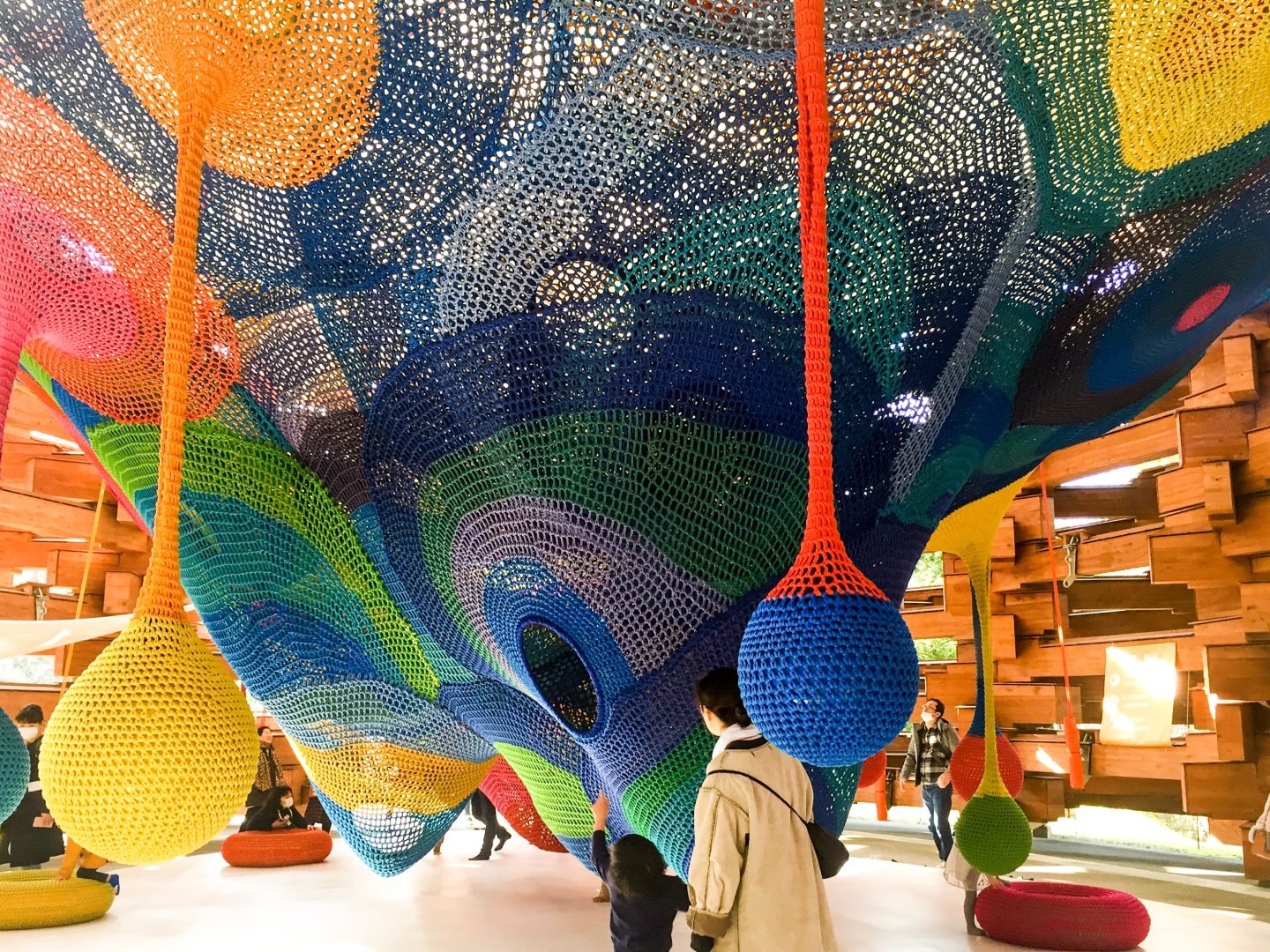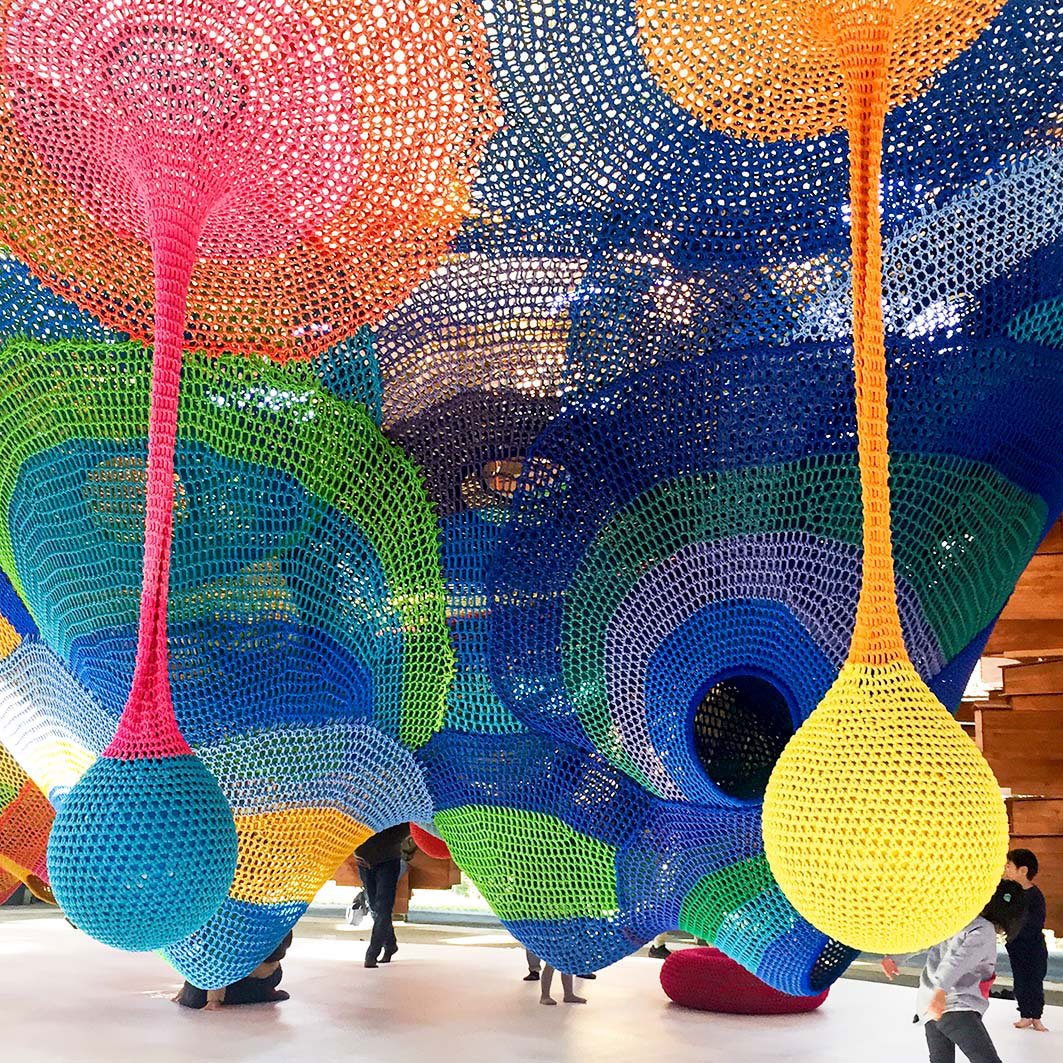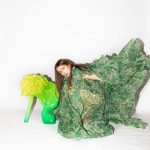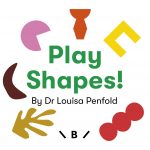Last month I was fortunate enough to visit the Hakone Open Air Museum, an outdoor sculpture park located a couple of hours outside of Tokyo.
A highlight of the visit was seeing the wonderful crochet play ‘sculptures’ of the artist Toshiko Horiuchi MacAdam. The artwork, titled ‘Knitted Wonder Space 2,’ is a gigantic textile structure that has the appearance of a net suspended in mid-air. The sculpture has a strong architectural quality to it, creating an immersive and sensory-driven play space for children.

On the afternoon that I visited, there was a tribe of toddlers and elementary-aged kids climbing, jumping, rolling, somersaulting, dangling and swinging their way through it. As the children played in the net, it moved and swayed with them, igniting squeals of delight and even more physical play.
Creating the crochet sculpture
Toshiko Horiuchi MacAdam created ‘Knitted Wonder Space 2’ using 650kg of nylon. She knitted the entire web BY HAND over the timeframe of a year. I get RSI just from thinking about that! She was influenced by the Spanish architect Antino Gaudi who was inspired by nature’s soft curves and organic shapes.
A collaborative production
The sculpture was created by a team of structural and project designers who assisted Toshiko in the artwork’s production. The artwork description acknowledged the following individuals:
Net design & construction: Toshiko Horiuchi MacAdam with Interplay Design & Manufacturing, Inc. Structural design: Norihide Imagawa, T.I.S. & Partners, Tokyo, Japan. Project design: Takaharu & Yui
This collaborative process really resonated with me as nearly all learning activities with children in art museums are constructed by a team of individuals. Everyone within such a team brings specialised skills and expertise to a project. I find that acknowledging and taking advantage of the opportunity to combine different people’s skills and expertise together to support children’s creative learning really exciting.
Children’s tactile learning
The structure, shape and form of ‘Knitted Wonder Space 2’ intentionally encourages children to physically move their way through the web. Children are not learning through looking, as is often the case in
Children physically move, swing, climb, roll and dangle their way through the web. The yarn itself – a stretchy nylon fabric – creates unique opportunities for children’s learning through tactile play.
For example, the nylon can be moved, pulled, climbed and jumped on in a really unique way. Its soft and malleable properties mean it can also be stretched and pulled in unique ways. I also think that children’s play in the sculpture is not entirely a frivolous activity. As they jump, roll and laugh their way through the nylon structure, they are also learning about concepts such as gravity, weight, measurement, height and texture.
Children’s risk-taking through play
In an interview with arch daily
“All children can play together. They do not have to be athletic, but can still use their whole bodies for fun – laughing, giggling and screaming. They have a great time together. Often older children help smaller children. They try to dazzle each other with their ingenious and acrobatic feats.
Children need to cope with risk. They enjoy a challenge but by nature are very careful. Presented with a play structure which does not challenge them, they quickly grow bored… and then break them. If you give them a challenging play environment, designed so children can assess risk, they will not get hurt. Our structures encourage children to challenge themselves but with many routes and options. There is no program of play. There are always alternatives. Each child plays at the level he or she is comfortable with. From forty years’ experience, I have learned a little about children’s psychology.
Some groups of children come regularly to play on their own; their play is fantastic. They know what they are capable of and then stretch just a little further, becoming more and more adept. Some of their manoeuvres are heart-stopping to a bystander – but they know what they are doing. Often it is parents who are the problem. They seem to have forgotten what it was like to be a child.”
I loved this artwork!

Learn more
Interplay Design and Manufacturing is the design company start by Toshiko Horiuchi MacAdam. This website features documentation and descriptions of all the artist’s projects: https://netplayworks.com/NetPlayWorks/Projects/Projects.html
Related posts
Children’s creative learning through the art of Sheila Hicks
The magic of materials in children’s theatre design
Bruno Munari: ‘inventor, artist, writer, designer, architect, illustrator and player-with children’





3 Comments
Took my grandkids to the only one in nz and it’s great. Wish there were more to let our kids be kids. Learn their limits, resilience, and challenge themselves
Pingback: Organic: #softnotsoft | 3D Design
It is made by hand crochet, and the weighing tension of each single rope is guaranteed to be more than 250kg, which is equivalent to the weight of 10 children. There is a pulling force of more than ten tons, and the color matching of the rope net is in line with the psychological requirements of children. It is easily accepted by children and makes them love it. The characteristics of the rope net are not only brilliant colors, but also safety for parents.
I have an article aboutcrochet playground , you can read it if you are interested